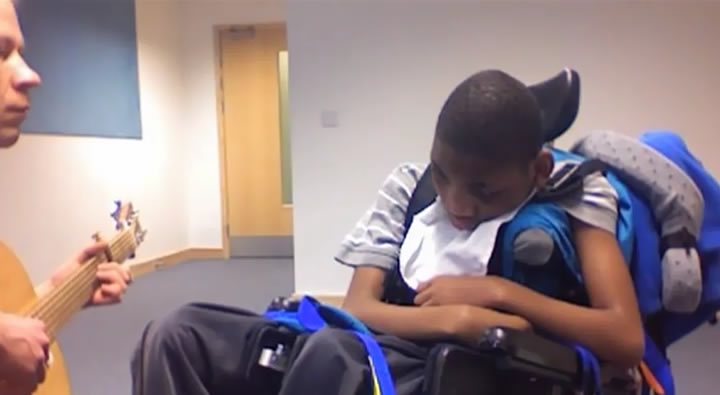
A child may not want to communicate if they feel uncomfortable – eg if they are hungry, tired, thirsty or need the toilet.
On the other hand, they may be more likely to communicate if it will help them to meet these needs – eg asking or signing for a biscuit at snack time.
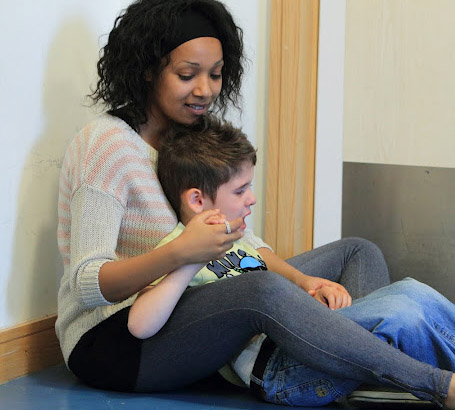
Make a list of factors that you think make a child you know feel happy in their environment.
Identify which factors are physical and which are social.
Think of a child you know who struggles with communication.
How do they indicate they are not happy in their environment?
How do adults respond?
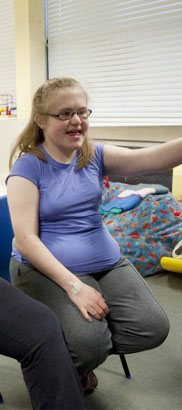
Encourage and praise children's attempts to communicate. Do not insist on accuracy. Although it is important to try to work out what a child is trying to say, it is just as important to be a good language role model. It helps to take what the child said, reform it into a full sentence, and repeat it back to the child.
Communication will not develop in a vacuum.
Ensure:
- The child wants to communicate (why?)
- There is someone to communicate with (whom?)
- There is something to communicate about (what?)
- There is a means to communicate (how?)
...and that communication is enjoyable and brings results.
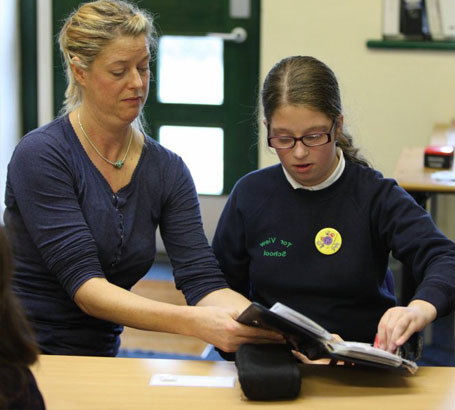
Children with learning difficulties will be slow processors, so:
- Give the children opportunities to initiate communication;
- Give them time to respond; and
- Allow the child to take the lead.
Watch this video clip in which a teacher uses music to engage a child with PMLD in communication.
Interventions in action
Watch these clips of specialist interventions. What are the similarities in these approaches? Why do you think they are important?
-
 Intensive interaction2:11
Intensive interaction2:11 -
-mini.jpg) Sherborne movement1:23
Sherborne movement1:23
The approaches seen in the video clips on the previous page share the same characteristics as early playful interactions between infants and their care givers.
Approaches for promoting communication with children with learning difficulties include:
- Being natural and intuitive;
- Making yourself available on each child's terms;
- Joining the person's world – rocking, banging, twiddling;
- Being playful – relaxing, smiling, having fun;
- Involving yourself in behaviours that seem important to the child;
- Respecting the child's right to not participate, scanning for signals that the child has lost interest; and
- Developing a feel for good interactive games.
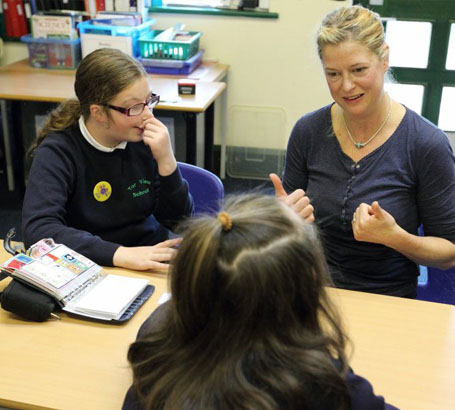
In a group situation, model the following essential social skills:
- Greeting people
- Listening attentively
- Speaking calmly
- Taking turns
- Refusing politely
- Asking questions
- Responding to queries
- Sustaining a conversation
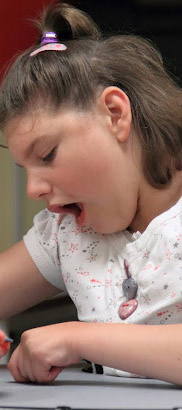
Some children with learning difficulties are able to speak but either prefer to use other forms of communication or simply don't see the point of speaking.
Some strategies to encourage speech are:
- Fake confusion, eg put out forks instead of spoons;
- Tidy away and only get out something needed for the next activity when the child asks;
- Sabotage – make sure there are not enough chairs for everyone and refuse to put right until instructed;
- Use a pause for the child to fill in a word in a familiar rhyme or story;
- 'Forget' to give the child something, eg a biscuit or piece of paper;
- Pretend not to see or hear until the child speaks; or
- Refuse to do something the child wants until they ask.
Using humour in practice
In this clip of Sophia's review, notice how her teacher's use of humour encourages Sophia to join in the exchange.
Watch for how the teacher at times uses humour to encourage and prompt more accurate verbal expression.
-
 Sophia's review2:40
Sophia's review2:40 -
 Encouraging verbal expression7:25
Encouraging verbal expression7:25
